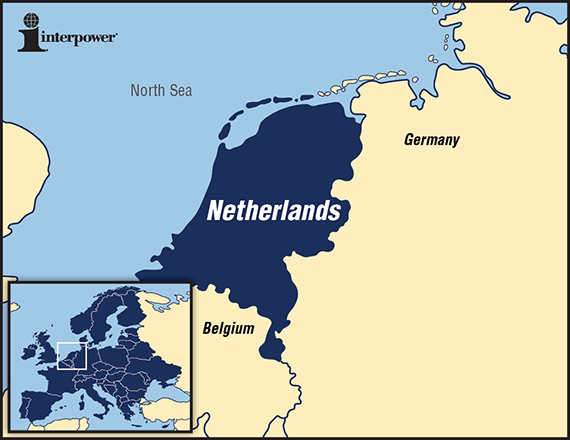Exporting to the Netherlands

| NETHERLANDS | |
|---|---|
| Actual population* | Population world ranking |
| 16,877,351 | 66 |
| Actual GDP (PPP)* | GDP world ranking |
| $699.7 billion | 24 |
| Actual GDP (per capita)* | GDP (per capita) world ranking |
| $43,300 | 18 |
*See the end of this blog for definitions
A prime location for importing and exporting due to having Europe’s largest port, the Netherlands offers many business opportunities and can be a significant trade link to the rest of the European Union.
The Netherlands has maximized market opportunities to become one of the top trading countries in the world. For those looking to begin exporting in Europe, this country can be one of the best places to start. One suggested market entry strategy is to use an agent or distributor who is knowledgeable in international trade. Because the Netherlands is not a huge country, many distributors may want an exclusive distributorship, which can be to a company’s advantage. When making an agreement with an agent or distributor, make sure it is in accordance with the EU and member state laws. Visits to the country are also recommended.
Learning about the Dutch business culture will enhance business relationships. The Dutch market can be competitive and the business community tends to be conservative. It should be noted that there is an emphasis on courtesy. Promptness in answering business requests (e.g. price quotations and orders) is important as is punctuality to all appointments. Using time efficiently is highly valued while spontaneity is not.
To find out more information about market entry strategies, Dutch business customs, and import/export requirements, resources include the United States Commercial Service and the United Kingdom Trade and Investment. Another resource is the Dutch Chamber of Commerce—Kamer van Koophandel. This Chamber provides information on starting a business, international trade, and information on the Business Register.
Located in Western Europe, the Netherlands joined the European Union in 1958 and is one of the original EU member countries. The EU is a Customs Union which consists of member countries who have formed a single region for customs purposes. Goods that have been imported legally can circulate throughout the EU with no further customs checks. To learn more about the customs regulations, among the sources to consult are the European Commission Export Helpdesk and European Commission Taxation and Customs Union. Conducting due diligence in accordance with all of the regulations is essential.
Some products may require safety testing and certification for this market. While not all products are required to have a CE mark, others do require one. When affixing the CE mark to a product, a manufacturer affirms that the product meets the necessary requirements and can be sold throughout the EU.
There are also EU regulations that need to be followed, so it’s important to know what is required in the Netherlands. Among them are:
- REACH is the European regulation for Registration, Evaluation, Authorization, and Restriction of Chemicals. The European Commission works closely with ECHA (European Chemicals Agency) in the implementation of this regulation.
- RoHS stands for Restriction of Hazardous Substances. It restricts the use of certain hazardous materials found in electrical and electronic products.
- WEEE stands for Waste from Electrical and Electronic Equipment. WEEE requires the treatment, recovery, and recycling of electric and electronic equipment.
While Dutch is the official language, English is also commonly understood within much of the business community.
In the Netherlands, the voltage used is 230V at 50Hz. The most frequently specified plug pattern is the Continental European plug.
Sources:
www.export.gov/netherlands
www.gov.uk
www.kvk.nl/english
Sources for European Union:
www.ec.europa.eu
www.echa.europa.eu
www.rohsguide.com
www.exporthelp.europa.eu
www.europa.eu
www.export.gov/europeanunion
*Source: www.cia.gov/library/publications/the-world-factbook/index.html
Country comparison—Population: Population compares estimates from the US Bureau of Census based on statistics from population censuses, vital statistics, registration systems, or sample surveys pertaining to the recent past and on assumptions about future trends. (July 2014 est.)
Country comparison—GDP (Purchasing Power Parity): GDP (purchasing power parity [PPP]) compares the gross domestic product (GDP) or value of all final goods and services produced within a nation in a given year. A nation’s GDP at PPP exchange rates is the sum value of all goods and services produced in the country valued at prices prevailing in the United States. (2013 est.)
Country comparison—GDP – per capita (PPP): GDP – per capita (PPP) compares GDP on a purchasing parity basis divided by population as of 1 July for the same year. (2013 est.)






